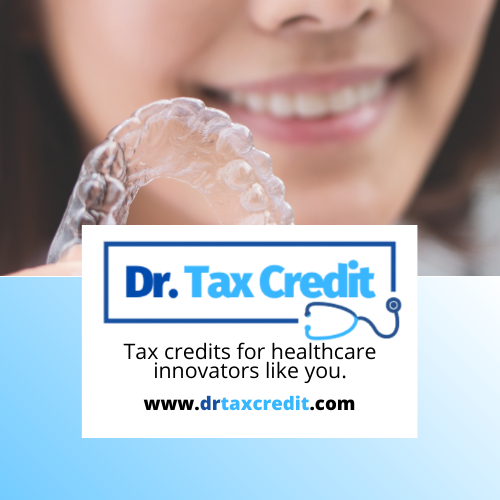Read the new blog on R&D Tax Credits for orthodontists, oral surgeons, and dentists at Dr. Tax Credit, LLC.

Consulting Services company, Dr. Tax Credit, LLC, has published surprising new data in their latest case study on The R&D Tax Credit for Orthodontists. Designed specifically for Orthodontists, dental specialists, oral surgeons, dentists, this case study provides a real-world look at the challenges facing Orthodontists, dental specialists, oral surgeons, dentists in identifying qualifying research activities and how those challenges can be overcome.
Interested parties can view the case study on the company website: https://www.drtaxcredit.com/orthodontists
The R&D Tax Credit for Orthodontists case study contains credible sources that provide reliable information that can be used to make important business decisions. This concrete example of success documents the steps taken by orthodontists to find an effective solution for identifying qualifying research activities.
Among the information included:
Tax Code IRC Section 41 describes this credit, which requires the satisfaction of a four-part test to qualify. Take a look at how it works:
1. The goal: integrate this new (or improved) care component to positively impact the quality of care.
This step is called the permitted purpose step in the four-part test and is satisfied when your activity brings a new or improved process for the purpose of enhancing function, reliability, performance, or quality. Translated into healthcare language: The component should be undertaken in an effort to improve patient outcomes.
2. Science is integral: the addition of telemedicine is designed to be technologically stable and medically useful.
Part two in the four-part test is the easiest to satisfy. It merely states that the component has to be based in the hard sciences, specifically computer, biological, medical, and/or engineering. Telemedicine qualifies under the principles of computer science and biological science.
3. Nothing is 100%: you started your telemedicine project recognizing that there was a chance it could fail - especially if you tried to integrate EHR into the process, train staff, or patients in this new access to care modality.
Part three demands that your activity must be intended to reduce uncertainty. You can do this by addressing the method of implementation or the appropriateness of the final design. For our example, you could do either. There is uncertainty in the combination of software, hardware, and humans - especially what products to use and how to go about the implementation. There is also uncertainty in what a final product should look like - whether you are talking about the focused system of digital connection or a more holistic question of what your practice guidelines should be for patients who connect with you through telemedicine.
4. You probably didn’t get it quite right on the first go. Most of our doctors tried - or at least investigated - a few different providers before settling on one. They definitely had to try a few different methods of getting the word out there, training staff, and educating patients.
The final step in the four-part test requires that you complete a process of experimentation. Specifically, simulation; evaluation of alternatives; confirmation of hypotheses through trial and error; testing and/or modeling; or refining or discarding of hypotheses.
The case study helps orthodontists identify qualifying research activities, with examples such as - clear aligners, 3D printers, intraoral scanners, CBCT imaging, wire & bracket systems
The Benefits of the R&D Tax Credit
Depending on the size of your practice and your Qualified Research Activities (QRAs), we have seen federal benefits ranging from $30,000 to nearly $400,000 for practices with between 1 and 4 practicing providers. This is a dollar-for-dollar benefit - meaning that when your corporate taxes come due, you can pay them with credit dollars, keeping your hard-earned money in the bank.
There is a federal tax benefit between 6.5% and 10% per dollar of Qualified Research Expenditures (QREs). Additionally, many states have complimentary R&D tax credit programs.
Calculation of your tax credit is somewhat complex; however, a quick estimation of the federal tax credit is around 10% of the amount of money that you spent in wages and supplies towards the development of a QRA.
Finding a team that is qualified to help dental specialists - the research activity needs to be defensible, which means an understanding of tax, law, and healthcare is a significant advantage
Benjamin Dyches, DDS, JD, CEO of Dr. Tax Credit, LLC said,
Every orthodontist should look into the R&D Tax Credit with Dr. Tax Credit. It has provided enormous benefit to innovative doctors - allowing them to continue to provide cutting edge services to their patients.
Professionals who need help with identifying qualifying research activities are invited to review the case study online or download the full case study directly: https://www.drtaxcredit.com/orthodontists
